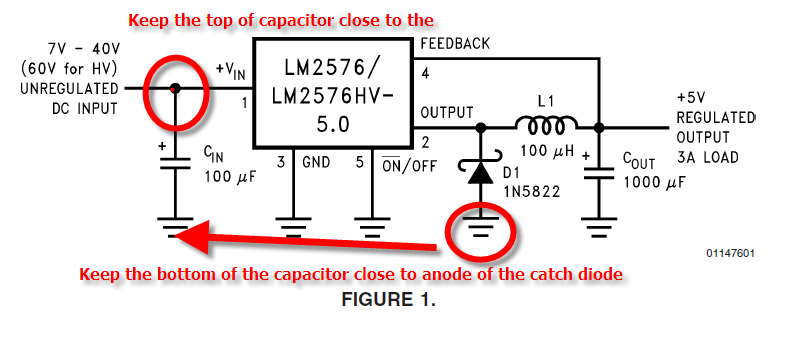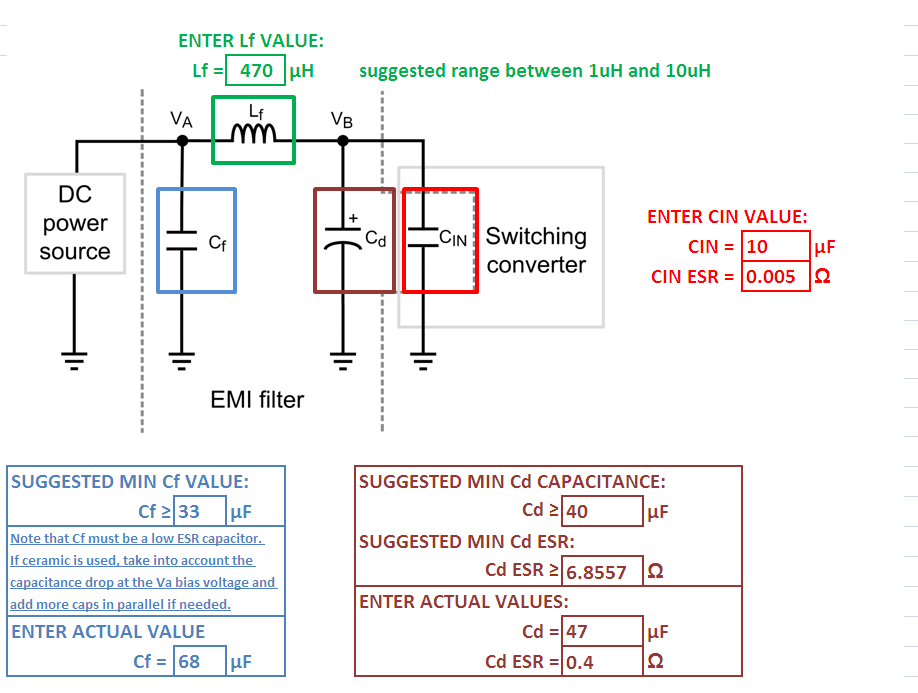Hello,
I'm trying to design a stabilized 5V on LM2576 (52kHz) for my lightning system.
35MHz Rx is connected to regulator linear BEC, regulator share the same battery as my module with LM2576.
Specyfications:
Input 5,5V - 21V (output may decrese below 5V when input is 5,5V - no problem)
max Iout 0,5A
On the output of LM2576 (after inductor) is ATmega8 wihich is switching on the darlington driver ULN2803 ports. Ports goes from driver to LEDs.
LM2576 works with inductor 470uH. Input Capacitors are tantal (tried 100uF to 680uF). Output capacitors are tanatal and electrolit (tried from 100uF to 3300uF - electrolits are LOW ESR JAMICON).
On the input wire I add small axial choke 0,33uH in series to minimize V ripple.
And I still get terrible noise (on the battery side). The noise on oscilloscope looks like around 40mVpp. But the servos rage when the Tx stands more than 1m (with antenna collapsed). I should easily go for a least 20m with no ripple. So my conclusion: the noise is from V ripple from wire system.
It seams like the problem is while the LED are blinking. The current goes instantly from 300mA to 500mA sometimes.
I get a little help from other RC forum to add ceramic capacitors 0,001 - 0,1uF.
And more to add common mode Toroid. But which one? On what frequencies or what uH should it have?
RC system is 35Mhz. Did not try on 2,4GHz, but if on 35Mhz will be ok, than on 2,4Ghz as well.
I would be very gratefull for help how to reduce the noise specially for this system?
I'm considering to use LM2596 with 150KHz switching - maby this is the clue?
Thanks
Maciek.
Poland/Europe



